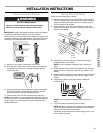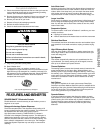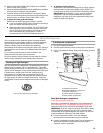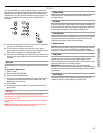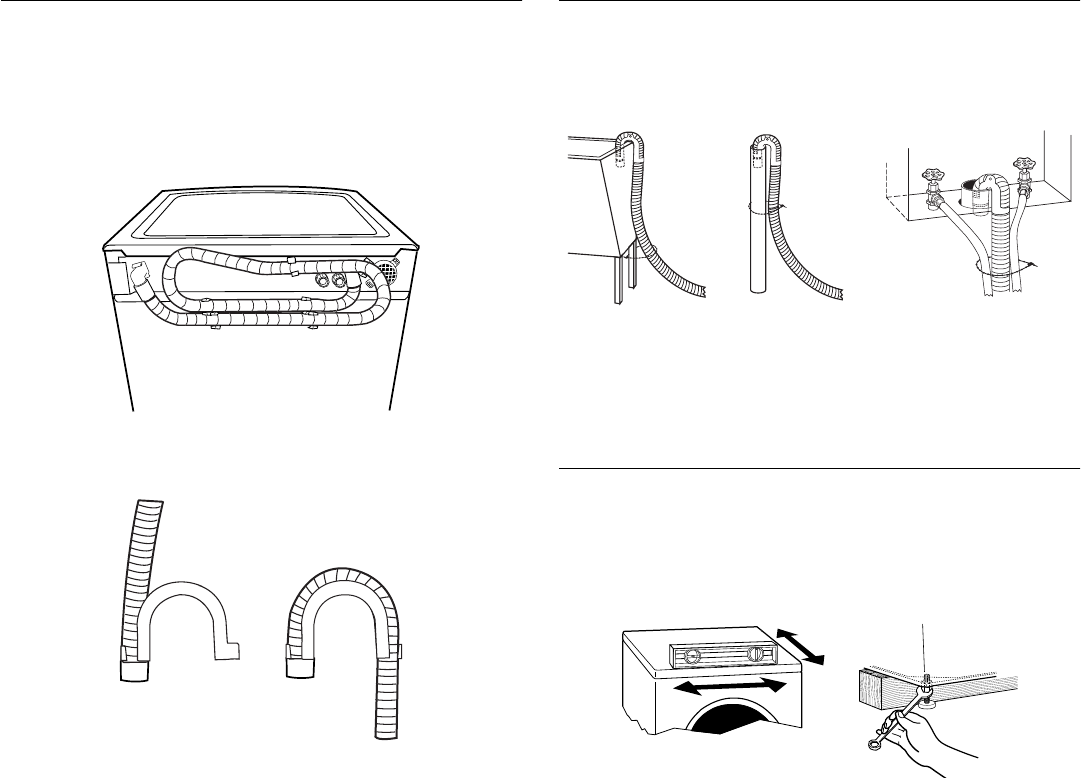
10
Route the Drain Hose
Proper routing of the drain hose protects your floors from
damage due to water leakage. Read and follow these
instructions.
Remove drain hose from washer cabinet
Gently pull the corrugated drain hose from the shipping clips.
Laundry tub drain or standpipe drain
Connect the drain hose form to the corrugated drain hose.
To keep drain water from going back into the washer:
■ Do not straighten the drain hose, and do not force excess
drain hose into standpipe. Hose should be secure, but loose
enough to provide a gap for air.
■ Do not lay excess hose on the bottom of the laundry tub.
Floor drain
You may need additional parts. See Floor drain under “Tools and
Parts.”
Secure the Drain Hose
1. Drape the power cord over the washer top.
2. Secure the drain hose to the laundry tub leg or standpipe with
the beaded strap provided. (See illustrations A and B.)
If the washer faucets and the drain standpipe are recessed
(see illustration C), put the hooked end of the drain hose in
the standpipe. Tightly wrap the beaded strap around the
water inlet hoses and the drain hose.
Do not force excess drain hose into the standpipe.
Level the Washer
Properly leveling your washer avoids excessive noise and
vibration.
1. Check the levelness of the washer by placing a level on the
top edge of the washer, first side to side, then front to back.
If the washer is against a wall, move the washer out slightly
before tipping back. If the washer is not level, first prop the
front with a wood block and adjust the feet as necessary;
then prop the back and adjust feet as necessary. Repeat this
step until washer is level.
2. Make sure that all four feet are stable and resting on the floor.
Then check that the appliance is perfectly level (use a level).
3. After the washer is level, use a 17 mm open-end wrench to
turn the nuts on the feet tightly against the washer cabinet.
IMPORTANT: All four feet must be tightened. If the nuts are
not tight against the washer cabinet, the washer may vibrate.
When you are pushing on the edges of the washing machine
top plate, the machine should not move front to back, side to
side, or diagonally.
4. Slide the washer to its final location.
5. Confirm the levelness of the washer.
A. Snap either end of the drain hose form to the drain hose at
the point where the corrugation begins.
B. Bend drain hose over drain hose form and snap into place.
AB
AB C










